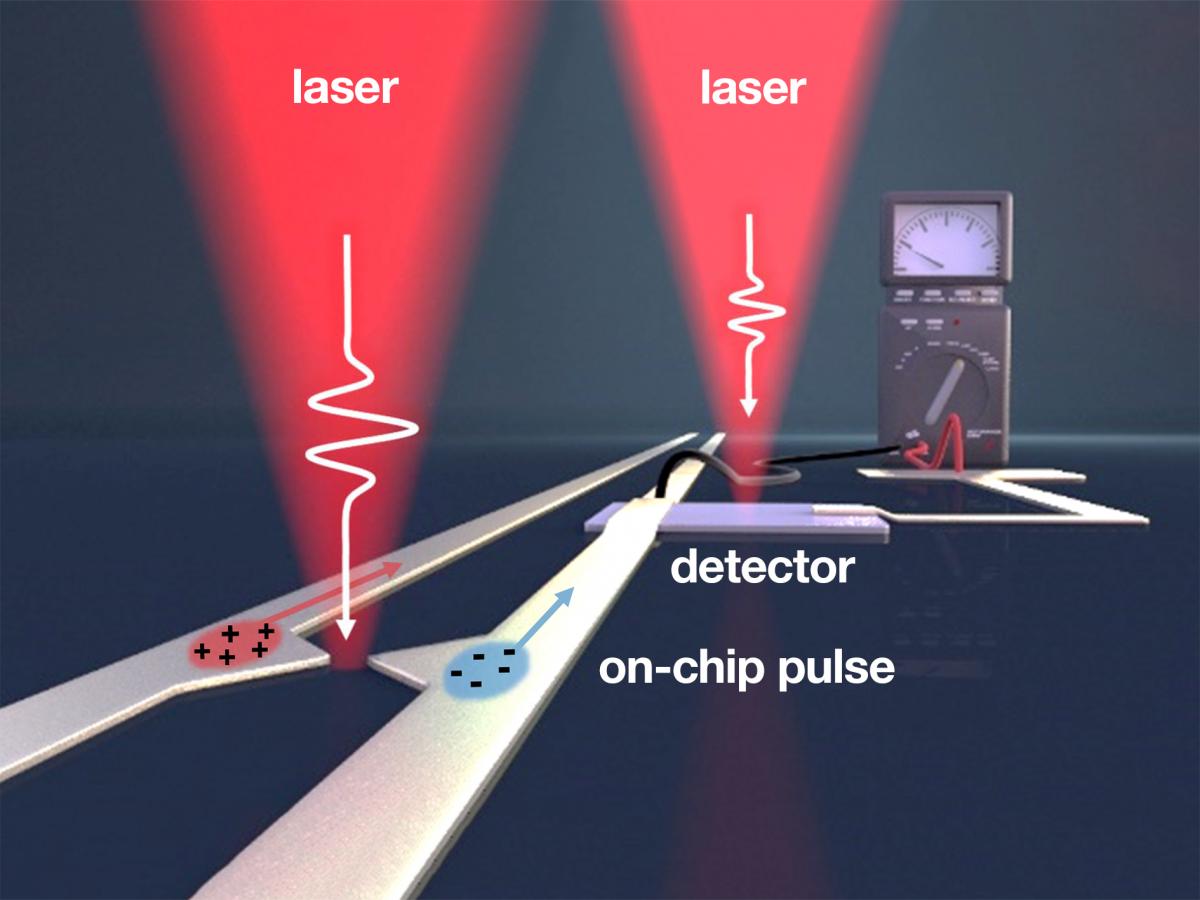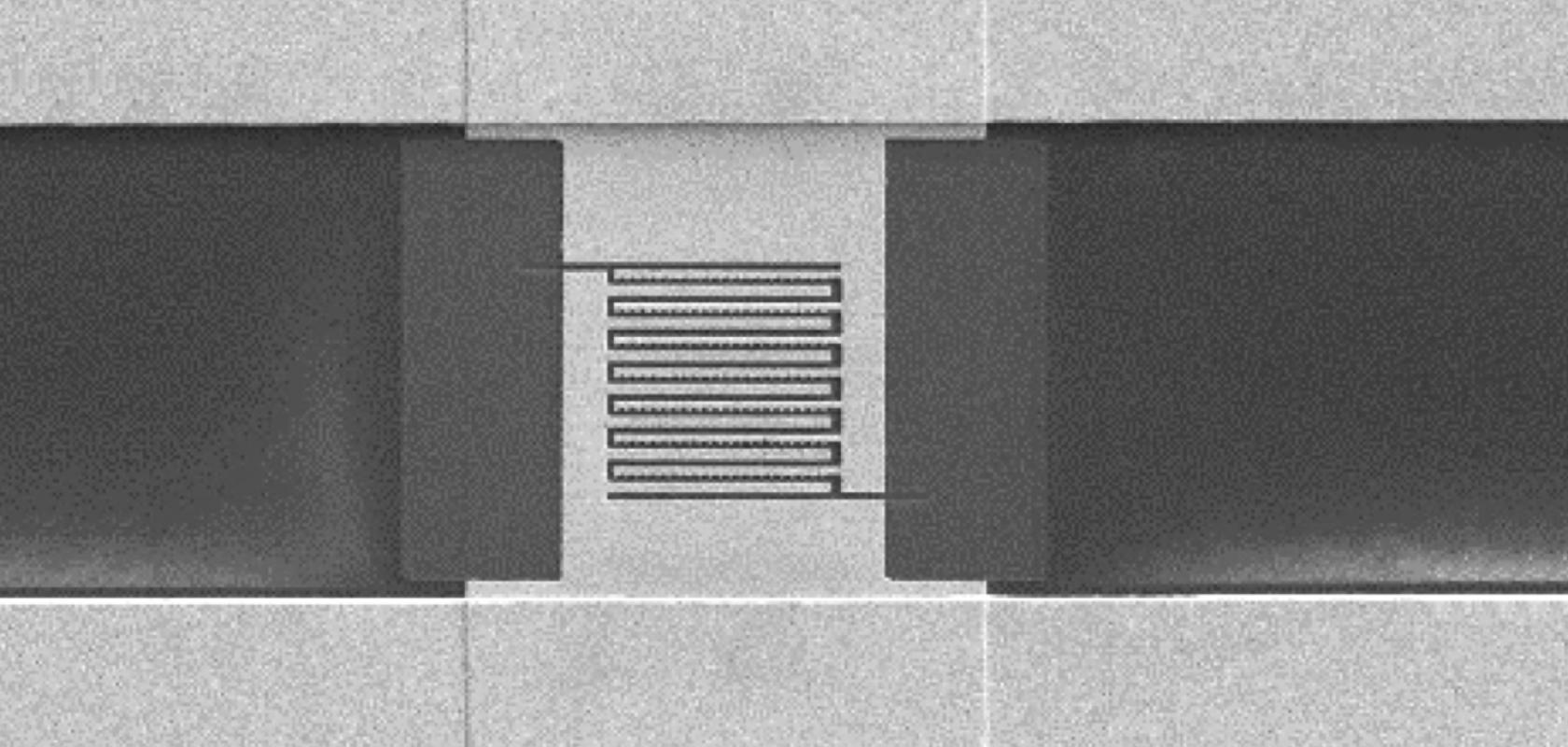Scientists at the Technical University of Munich (TUM) have demonstrated that 14 femtosecond optical pulses in the near-infrared can drive electronic on-chip circuits with a prospective bandwidth up to 10 terahertz.Published in Nature, the research could enable the development of new, powerful terahertz (THz) components.
To combine the advantages of ultrafast femtosecond nano-optics with an on-chip communication scheme, optical signals with a frequency of several hundreds of THz need to be down-converted to coherent electronic signals propagating on-chip. Traditional electronics allows frequencies up to around 100 gigahertz, whereas optoelectronics uses electromagnetic phenomena starting at 10 terahertz (THz). This range in between is referred to as the terahertz gap, since components for signal generation, conversion and detection have been extremely difficult to implement.
TUM physics professors Alexander Holleitner and Reinhard Kienberger succeeded in generating ultrashort electric pulses in the frequency range up to 10 terahertz using metal antennas only a few nanometres in size, and then running the signals a few millimetres above the surface and reading them in again a controlled manner. Researchers call antennas plasmonic if, because of their shape, they amplify the light intensity at the metal surfaces.

Because the antennas are asymmetrical - with one side of the nanometre-sized metal structures being pointier than the other - when a lens-focused laser pulse excites the antennas, they emit more electrons on their pointed side than on the opposite flat ones. An electric current flows between the contacts – but only as long as the antennas are excited with the laser light.
'In photoemission, the light pulse causes electrons to be emitted from the metal into the vacuum,' explained Christoph Karnetzky, lead author of the Nature work. 'All the lighting effects are stronger on the sharp side, including the photoemission that we use to generate a small amount of current.'
The light pulses lasted only a few femtoseconds, and the electrical pulses in the antennas were just as short. Technically, the structure is particularly interesting because the nano-antennas can be integrated into terahertz circuits a mere several millimetres across.
In this way, a femtosecond laser pulse with a frequency of 200 terahertz could generate an ultra-short terahertz signal with a frequency of up to 10 terahertz in the circuits on the chip, according to Karnetzky.
The researchers used sapphire as the chip material because it cannot be stimulated optically and, thus, causes no interference. With an eye on future applications, they used 1.5 micron wavelength lasers deployed in traditional internet fibre optic cables.
Holleitner and his colleagues also discovered that both the electrical and the terahertz pulses were non-linearly dependent on the excitation power of the laser used. This indicates that the photoemission in the antennas is triggered by the absorption of multiple photons per light pulse.
'Such fast, nonlinear on-chip pulses did not exist hitherto,' said Alexander Holleitner. Utilising this effect he hopes to discover even faster tunnel emission effects in the antennas and to use them for chip applications.


